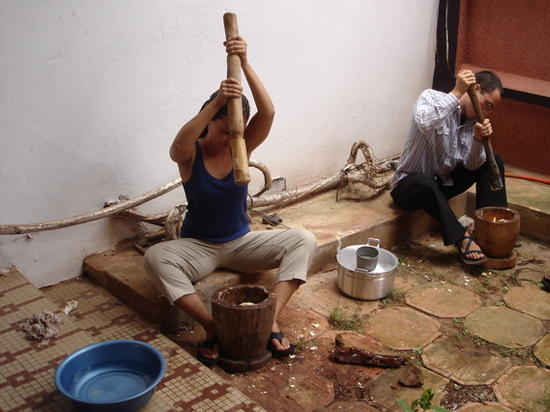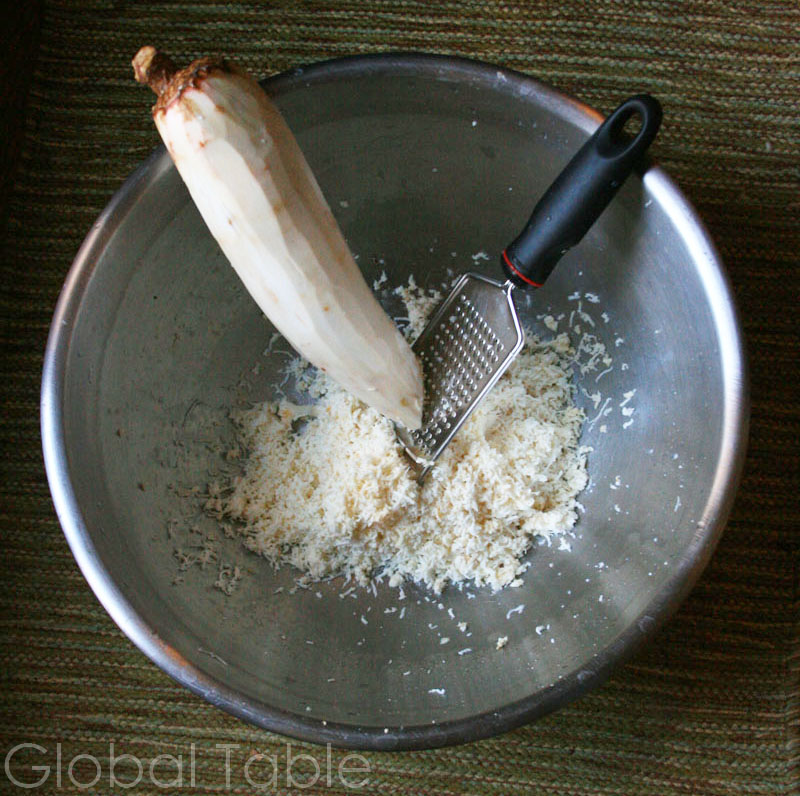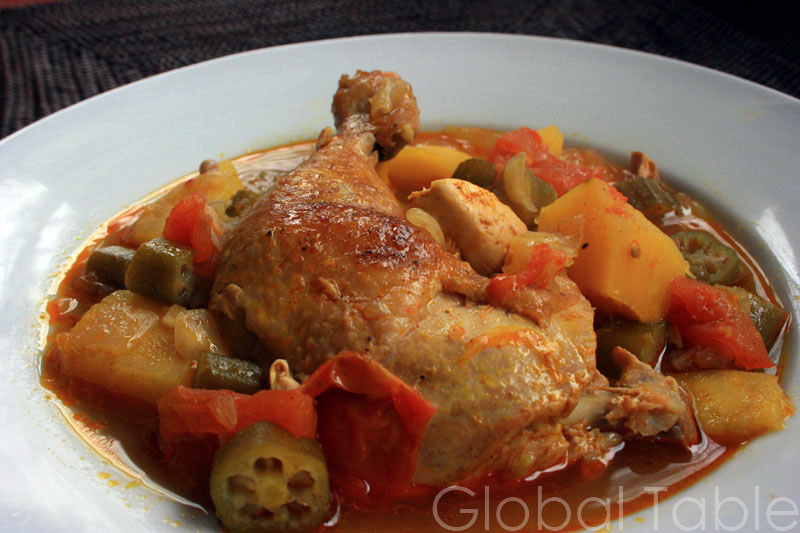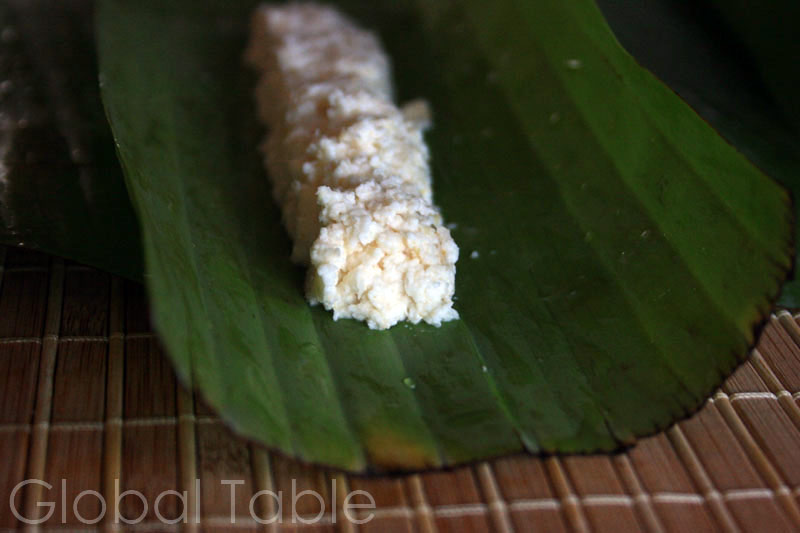Because there is a shortage of information on Benin, I had to dig really deep to find some fun facts. In my search I happened upon a lovely blog by a young woman named Jen. Jen is an American who spent 2 years in Benin for the Peace Corps. I enjoyed reading through her experiences (although I am sad to report that they end mid-trip, suddenly and without explanation). First, I want to share a picture I found of her cooking class in Benin. You will see the lengths Jen and the other students are going to to get the food mashed and ready to eat. Makes you appreciate blenders, food processors, immersion blenders, and power gadgets in general. AND it makes me not feel so bad for having to peel 1,000,000 beans the other day. Upon reading some more of Jen’s blog, I learned that food service is typically very slow (in this entry she was visiting an area called Grand Po Po). In fact, some restaurants take 1-2 hours to prepare the food. Why, you …
Read More
I spent the better part of a day peeling beans for our Benin Global Table. This is partially because it takes an eternity to peel beans and partially because my husband became incapacitated by kidney stones. All day we ran around to the doctor, the lab, and the prescription house. I didn’t take my beans with me which, of course, set me back several hours – but prevented me from looking like a crazy woman. Here’s how to peel beans: First things first. Soak 2 cups of beans overnight. 2 cups seems like a small, petty, insignificant amount of beans. Think to yourself, “Surely this paltry pile of beans will take no time at all to peel.” The next day wake up bright-eyed and bushy-tailed, ready to tackle the job. Stare in disbelief as you realize 2 cups of beans is now 6 cups of beans. Otherwise known as 1,000,000 beans that need peeling. Grab 2 bowls, 1 for the discarded skins, 1 for the clean beans. Begin the work of peeling the beans. Some beans …
Read More
Although Benin is an impoverished country with many people living off a simple diet of fufu, yam, rice, and beans, the cuisine also offers upscale, global flavors, most notably influenced by French flavors and techniques. For example, this menu features crab, an commonly fished for in the south of Benin, prepared in a simplified French manner with eggs and vegetables. Crabs from Benin [Recipe] Lump crabmeat baked with egg, onion, garlic, tomato, and hot chili peppers Pureed Black-eyed Peas [Recipe] Steaming hot black-eyed peas are pureed and beaten with butter Coconut Rice [Recipe] White rice simmered in rich coconut milk Green Baby Bananas in Orange Sauce [Recipe] Bananas baked in orange juice and brown sugar. Serve hot as is, over plain cake, or with ice cream.
Read More
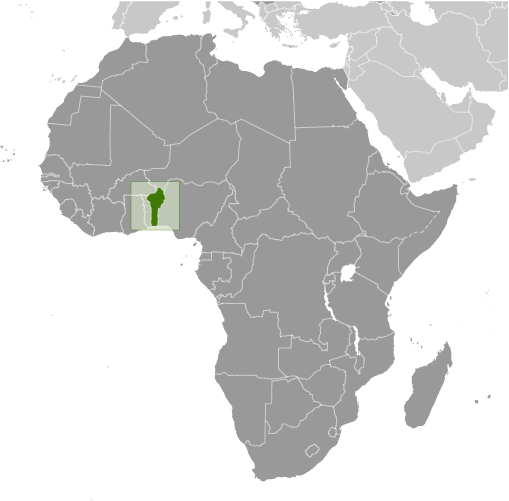
Tall, thin, and irregular, Benin juts deep into the African continent, resembling a smoked turkey leg (which just happens to be my favorite fair food here in Oklahoma). Thanks to this unusual geography there is a notable difference between the food in the semi-arid north and the tropical south. Traditional Cuisine: Corn is the starch of choice in the more fertile south, whereas yams are more popular in the dry north. In both cases, the starch is cooked down into a mush-like consistency and eaten with the fingers. This traditional preparation is called fufu. The entire country also eats white rice cooked in rich, fatty coconut milk, when affordable. This tradition spread to the Caribbean where it remains popular. Peanuts are also traditional and are used many ways in Benin, the most prevalent of which is called kuli kuli. Kuli kuli are ground peanuts bound together to create balls which are then deep-fried. This rich treat is essentially deep-fried peanut butter. Mmm, sounds heart-stoppingly good. Culinary Favorites: Spicy peanut sauce is the ketchup of Benin. …
Read More
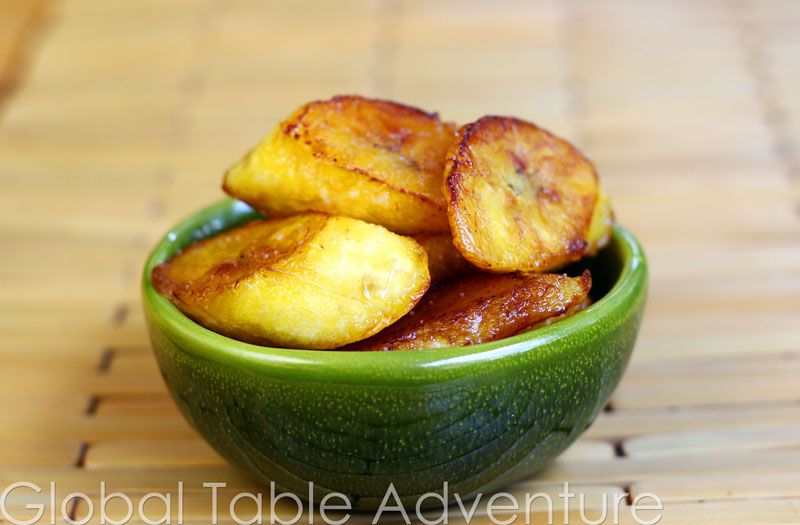
One plantain serves 1-2 Fried plantains can be on the table in less than 5 minutes. This easy, delicious side dish goes well with any Caribbean or African food. In particular, the slightly sweet flavor helps contrast with both region’s spicy dishes. Ingredients: 1 plantain vegetable oil salt or brown sugar Method: 1. Heat a thin layer of vegetable oil in a frying pan. Meanwhile, cut plantains into long, oblong slices. NOTE: Choose plantains that are yellow to black in color, not green. The green plantain in the photo was still under ripe and inedible. Green plantains behave like green bananas, after a few days the bland astringency gives way to a mildly sweet flavor. 2. Fry in the oil on both sides until browned. NOTE: How browned you like them is a matter of taste. I like my fried plantains pretty dark 🙂 3. Sprinkle immediately with salt or brown sugar. Serve hot. The first time I made plantains – oops crispy. Although they are a bit charred, they are still uber tasty. When I …
Read More
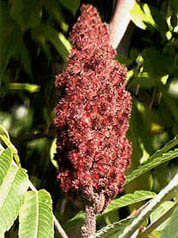
There are weeks I spend 10 hours grocery shopping. Take week 5, for example. Angola. I ran around to the fish market, the latino market, the african market, the health food store… and, just when I thought I was done, I realized I forgot something on the list and I had to head out again. With a baby, no less. A baby with needs. For example, Ava likes to eat once in a while. And sleep. And poop. She’s like a ticking time bomb; do too many errands, and she goes off. Well, this week I did not have to make ANY special trips. Hurrah! Thank goodness because it was raining cats and dogs when I got up the gumption to go. I’ll admit, I am pleasantly surprised at how simple Armenian food is. It turns out Armenians love hungarian paprika and parsley. They use lemon juice, yogurt, and honey. And they like stuffed vegetables. Incidentally, this is exactly how my mom cooks. Which is weird. But also, very comforting. Ground Sumac/Sumakh The “strangest” ingredient on my shopping list was ground sumac. I’ll be …
Read More
This is meal #5 in my personal challenge to eat one meal from every country in the world. I am something of an “Eeyore.” I wear worry like it’s going out of style. These are just a few of the things I worry about when I put on a dinner party: – will the food taste good? – what if I burn the food? – what if the food is raw? – what if I don’t have time to finish the meal? – will my friends like the food? – will I like the food? So what about this weekend’s Global Table? I was unsure of three ingredients: the red palm oil, the habanero, and the prawns. All of these items were new to me and I had no way to predict how they would taste. Worse yet, I wasn’t even sure how to work with them. I overcame my Eeyore tendencies by telling myself that if an entire country eats these foods, they are probably pretty good! Turns out, I was right. For the fifth weekend in a row, things went great. …
Read More
Serves 4 Muamba de Galinha gets its unique flavor from Red Palm Oil. This spicy stew tastes great with yuca, or serve over rice. Ingredients: 1 lemon, juiced 4 garlic cloves, crushed 1/2 tsp salt 1 1/2 tsp chili powder 1 chicken cut into quarters 1/2 cup red palm oil 3 onions, diced 1 whole chili pepper 3 tomatoes, quartered 1 lb pumpkin cut into 1.5″ cubes 1 cup chicken broth 1/2 lb frozen okra Method: 1. Mix lemon juice, 2 garlic cloves, salt, and chili powder and rub on the chicken and marinate for one hour (or up to one night). 2. In a large pot heat oil. Brown chicken on all sides. Avoid crowding. Do this is in several batches if you have to. 3. Add onions, remaining garlic, chili pepper, and tomatoes. Bring to a simmer and cover. 5. Cook on low for about 1 hour, or until chicken is tender. 6. Add squash, chicken stock and okra. Cook for 15 minutes or until everything is tender. Serve hot. Angolan Chicken Stew | Muamba de Galinha Votes: 1 Rating: 4 You: …
Read More
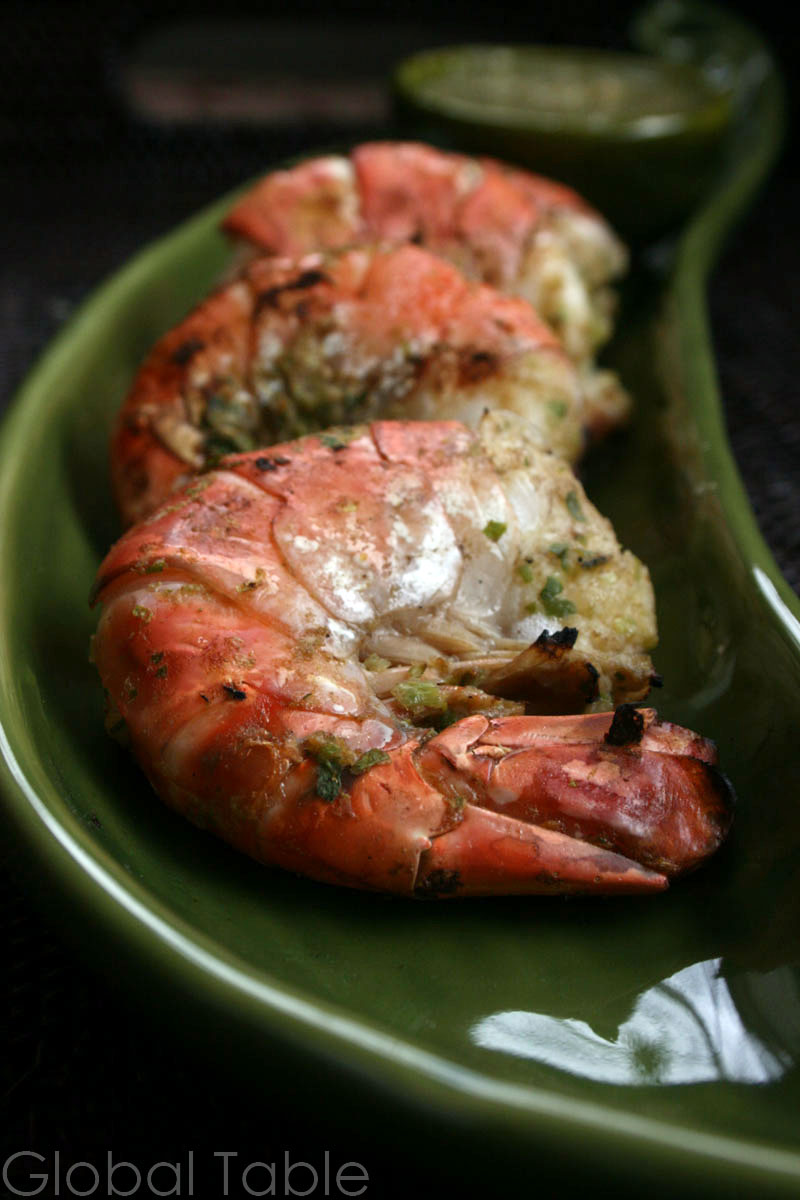
Serves 4 Prawns are a real treat, especially on the grill! For this Angolan appetizer we thawed frozen prawns in some of the marinade overnight (in the refrigerator). This simple step saved us time on meal day. I’m honored that this recipe was featured in Penzy’s Spices’ 2012 early summer catalog. Ingredients: 4-8 prawns 4 cloves garlic, crushed 4 green onions, chopped 1/8 tsp minced habanero 1 tsp cumin 1/8 tsp salt 1/4 cup white wine vinegar 1/4 cup water Method: 1. In a small food processor, combine all ingredients except prawns. Pulse until mixture forms a loose paste. NOTE: This step may be done the day before, just cover and refrigerate. The habanero will get stronger overnight as its hot oils mix more with the other ingredients. Depending on the habanero, this recipe is fairly mild. 2. Brush prawns with about 1/3 of the marinade, reserving the rest for dipping. If prawns are frozen, thaw completely. 3. Grill prawns about 3 minutes per side or until no longer translucent. Serve immediately with dipping sauce on the side. Grilled Prawns with Peppers | Camarao Grelhado Piri …
Read More

Serves 4-5 Cocada Angolana is an intensely sweet dessert. Make sure to add plenty of cinnamon; the warm spice rounds out the flavor. Ingredients: 1 cup water 2 cups sugar 4 whole cloves 4 cups grated coconut 1 1/2 cups whole milk 1-2 Tbsp cinnamon Method: 1. In a large pot over medium heat, cook water sugar, and cloves. Stir until dissolved. Heat until mixture reaches soft-ball stage on a candy thermometer (about 240F). 2. Using a spoon carefully discard cloves. 3. Add coconut and milk. The mixture will clump. Continue to stir until smooth. Simmer for a few minutes. 4. Spoon into serving dishes and refrigerate at least 30 minutes. 5. Sprinkle with cinnamon. Serve chilled. Coconut Dessert | Cocada Angolana Votes: 0 Rating: 0 You: Rate this recipe! Print Recipe Cocada Angolana is an intensely sweet dessert. Make sure to add plenty of cinnamon; the warm spice rounds out the flavor. CourseSweets Lifestyle5-ingredients or less, Gluten-Free, Vegetarian Servings Prep Time 4-5 People 5 minutes Cook Time Passive Time 10 minutes 30 minutes Servings Prep Time 4-5 People …
Read More
Serves 8 What is a Bâton de Manioc? The pounded flesh of the yucca root, wrapped in banana leaves and steamed for several hours. These dense yuca sticks are great cut up and eaten with stew. They take on the flavor of the banana leaves (which taste like steamed artichoke). Note: Do NOT shred the tough fibers in the center of the cassava, as these are unfit to eat and may contain traces of cyanide (just like apple seeds). Ingredients: 2 lbs cassava tubers banana leaves or aluminum foil Method: 1. Peel tubers. 2. (This step is optional in the US) Soak the cassava tubers in a bucket of water for about 3 days. Rinse off. 3. Using a grater, shred the tubers into a large bowl. Again, be careful NOT to shred the tough fibers in the center, as these are unfit to eat. Then, using a pastry cutter (or potato masher), pound into a paste. NOTE: If you have a large enough mortar and pestle, you can use this as well. 4. Place about 1/4 cup of the paste …
Read More
You may be aware that Angola was in civil war from 1975-2002 (after winning independence from Portugal). This war devastated Angola, but they are working hard to put the pieces back together. Here is a beautiful Angolan peace song (with English subtitles). Want to learn more about Angola? Read the story of 5 men who ride their motorcycles through Angola. Even if you aren’t interested in their story, I highly recommending looking through the photos. They really give you a sense of what the Angolan countryside is like. Here’s just one of a hundred photos (there are 50 pages of text and photos):
Read More

